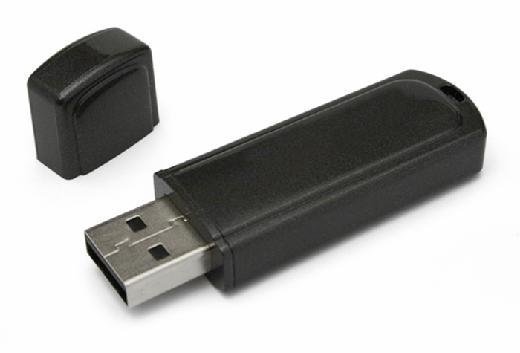
When it comes to storing files, USB flash drives are the first choice of most users. USB storage devices are widely used for storing digital files and transferring data from one computer to another. These portable devices have replaced CDs & DVDs as the preferred storage media. USB flash drives or pen drives are not only convenient to use but also provides good storage capacity. All these advantages clearly make USB drive a great option for storing data. But does the USB drive memory last forever? Is it safe to store important documents in pen drives?
With technological improvements, the latest USB drives have become more durable and reliable for storing data. With proper care, you can expect your device to work for a decade. But if you continue to use it recklessly, again and again, it will wear out eventually. The data written on a flash drive is stored within the drive’s flash memory chips. The cells that contain data can be read over and over again without impacting the drive’s reliability. However, USB drives have a definite number of write/erase cycles.
The life expectancy of a USB Flash Drive depends on the number of times data is written to a cell. Typically, most USB flash drives have a finite write/erase cycle that ranges from 10,000 to 100,000 writes and erases. The number of write/erase cycles depends on the memory technology used that determines the life expectancy of a drive. Once the drive reaches its maximum write/erase limit, the device may not function properly and result in data loss and corruption. Besides this, the thumb drive can also wear out prematurely due to some other factors.
Table of Contents
How to Extend the Life of Your USB Drive?
Now you might be wondering is there any way to extend the life of your USB drive. If you want to protect your data and prevent premature flash drive failure, it’s best to minimize write operations that can improve its overall performance. In addition to this, there are some more tips to prolong the life of your pen drive. Read further to know how to keep your USB drive in good condition and increases its performance.
1. Physical Damage
First, you need to handle your USB drive safely to prevent physical damages that lead to data loss. When not in use, store your device in a box or pouch. Make sure that the cap of the drive is on when not in use. This will prevent dirt and debris from making their way into your drive’s crevices. Also, avoid touching the contacts surface directly. You should also consider environmental factors such as exposure to high temperatures, water, or magnetic emissions from other devices like your cell phone that damages the USB drive.
2. Don’t Defragment
Defragmentation is a process that rearranges fragmented files to optimize storage and performance. USB flash drive users shouldn’t perform this step because flash media doesn’t require defragmentation. A defragmentation process that helps hard drives can kill flash storage devices. To prolong the life of your flash drive, disable the auto-defragment option for your drive.
3. Avoid Editing Files Directly on the USB Drive
If you edit the files directly on the flash drive it may corrupt your data. The right way of using the drive is copying the data to a hard drive, make the required edits, and then copy them back to the USB drive. You should also avoid plugging your flash drive into unfamiliar computers that could be virus infected.
4. Check Your Flash Drive’s Usage
USB drives have limited write/erase cycles. Similar to other storage devices, USB drives also eventually wear out. Even the best flash drives such as Transcend USB drives have a specific lifespan. A sudden drive failure leads to catastrophic data loss and needs Transcend Data Recovery. However, to prevent sudden failure and data loss, keep a track of your drive’s usable capacity.
5. Safely Remove the Drive When Not in Use
If you’re not using the USB device then don’t leave it connected to your computer. Leaving the flash drive plugged in is a common cause of the device’s early death. Not removing the device increases the risk of physical damage. Moreover, when plugged in, the operating system (OS) continuously writes on the USB drive and that result in wearing of the flash drive. It is also noteworthy here to always remove your drive safely. Instead of directly pulling it out, you should use the “safely remove” option on your computer. This will instruct your OS to stop reading your drive.





More Stories
7 Ways to Fuel Up Your Mobile App Developers’ Efficiency
Powerful Remote Access with Cloud VPN Gateway
Stream and Download ‘In the Heights’: A Much Awaited Musical Drama on HBO Max